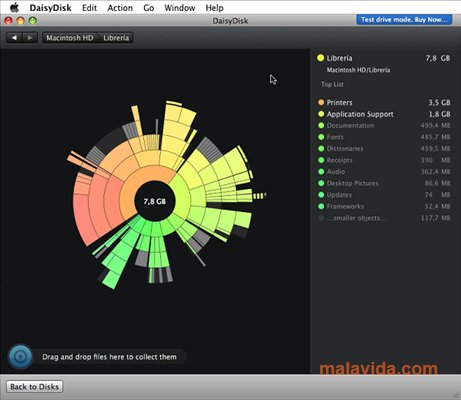

Remember that the only library you can share using iCloud Photos is your system Photos library: if you have other Photos libraries, you can access them locally, but can’t share them using iCloud. Keeping them in iCloud adds complexity, but in theory that should also enable you to reduce how much is kept locally. In my experience, Photos libraries remain the easiest to move elsewhere, and you can divide them up into multiple libraries if you wish. Before Apple divided iTunes up, it was usually straightforward to relocate your music or movies libraries to external storage, but this has now become more difficult. Some of the largest collections of files in most Home folders are those containing media libraries, such as those for Photos and Music. You also need to use external storage that’s stable, not easily disconnected, and reliable, and ensure that all documents there are fully backed up to a different disk. Documents stored in the Documents folder can only be changed by apps you approve to have access to that folder move the documents to external storage and the same apps need a different privacy setting, so they have access to removable media. This has the slightly odd effect of changing their privacy protection. If your Documents folder is bursting at the seams, moving most if not all its contents to a different disk is a straightforward solution that has almost no adverse effects. If anyone is going to trash files from my Mac, that’s going to be me, and not some well-meaning app with other ideas. Some like to use commercial cleaning or housekeeping utilities, but I don’t recommend them because of all the problems they can cause. If you want to be systematic about this, then apps like DaisyDisk and GrandPerspective are far superior for discovering what’s taking up all that storage space than the built-in Storage feature.

You’ll find fuller discussion of this here.
#DAISYDISK STARTUP FULL#
This also applies only to copies made on the same volume: even if they’re in the same container, copies on different volumes will take their full storage space. When the two cease being faithful duplicates, though, changed data does start taking space, so perhaps we should now look for unwanted older versions rather than cloned duplicates. Most copies and duplicates made on the same volume are now cloned, which means that APFS cunningly doesn’t initially create any new data, as both files share the same. It used to be that finding duplicates was a rewarding activity, but that has become more complicated with APFS. Good housekeepingĮven the most methodical of us accumulates files that we don’t really need.
#DAISYDISK STARTUP FREE#
Rather than writing a huge file to try to force purging, plan ahead and create real free space in advance.
#DAISYDISK STARTUP UPDATE#
The best space management is pre-emptive, and frees up storage before it’s needed, and you have to rely on macOS purging snapshots and cache files before the volume can accommodate an update or other important file.


 0 kommentar(er)
0 kommentar(er)
